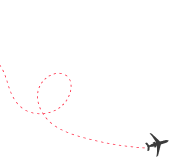Did you know that there are over 4 million people who have taken the IELTS and over 1 million PTE test takers in recent years? But do you know what the one thing most of them struggle with is? It is choosing between PTE vs IELTS exams.
Both PTE and IELTS are English proficiency tests that are widely recognized and are an important step for anyone who wants to study, work, or migrate abroad. So, which one is easier PTE or IELTS? And more importantly, which one is right for you? Let's break it down.

Table of Contents
Proving your English language proficiency is the first step for anyone who is planning to work, study, or migrate to an English-speaking country. But how can one do that? Thorough English proficiency tests! IELTS and PTE are two of the most popular and highly recognized tests that are used by universities, authorities, and employers to gauge a candidate's ability to understand and communicate English effectively. To understand what is the difference between IELTS and PTE, let’s first get a brief overview of both of these English proficiency tests so that your basics stay clear.
IELTS, which stands for International English Language Testing System, is a language proficiency test used by universities and colleges, immigration authorities, and employers to assess the English language proficiency of a non-native English speaker.
This is one of the most popular tests, whose major purpose is to help non-native English speakers study, work, or migrate to an English-speaking country. Additionally, IELTS preparation is important as this test assesses core language skills like reading, listening, writing, and speaking, and is further divided into two main types: Academic and General Training.
Now let’s talk about the PTE exam, PTE serves the same purpose as IELTS which is to asses one’s English language proficiency for academic admissions, immigration applications, and Professional certifications. However, PTE differs from IELTS in terms of scoring methods and formats.
PTE is a computer-based test that assesses your speaking, writing, reading, and listening skills and uses AI-powered algorithms to score the test. Furthermore, PTE is divided into four types of exams: PTE Academic, PTE Academic Online, PTE General, and PTE Young Learners, each serving a different purpose.
The main PTE and IELTS difference is that even though both exams serve the same purpose, assessing the test takers' English language proficiency, they both differ from each other in terms of format and scoring methods.
Below is an IELTS PTE comparison table to help you better understand the difference between these two:
|
Key Aspect |
PTE (Pearson Test of English) |
IELTS (International English Language Testing System) |
|
Test Format |
Fully computer-based |
Paper-based or computer-delivered |
|
Scoring Method |
Uses AI for scoring |
Includes human examiners, especially in the speaking section |
|
Purpose |
Primarily used for academic admissions and visa applications in select countries |
Widely used for academic, work, and migration purposes all around the world. |
|
Test Duration |
3 hours (Approx.) |
Depending on the format can range between 2 hours and 45 minutes |
|
Speaking Test |
AI-assessed and is spoken into a computer |
Face-to-face with the examiner |
|
Test Format |
Combines all four skills which are Reading, Writing, Listening, and Speaking Within one task |
Separately assesses each skill |
|
Results |
24-48 hours |
5-7 days |
|
Scoring System |
Scored on a scale of 10–90 |
Scored on a 0-9 band scale |
|
Difficulty Level |
Is evaluated by AI and requires precision in pronunciation & fluency |
Requires structured answers & fluency |
|
Global Recognition |
Increasingly accepted. However, recognition varies by country or institution |
Broadly accepted worldwide for academic, work, and migration purposes |
|
Cost |
₹18,000 |
₹18,000 |
As we mentioned in the table, IELTS vs PTE are both scored differently. While IELTS uses a band score system on a scale from 1 to 9, where 1 is the lowest and 9 is the highest IELTS band score one can get. In addition to that, each of the IELTS sections is scored individually, and the final band score is the average of these four scores.
On the other hand, PTE scores are measured on the basis of the Global Scale of English (GSE) and the scores range on a scale from 10-90. This is more of a granular score system that gives precise information and denotes single-point increments. This helps in assessing your English scores much more precisely.
So PTE vs IELTS? What to choose?
The important thing you can keep in mind when deciding which exam to take is to check what IELTS vs PTE score the university or organization you’re applying to needs. Some places ask for a PTE score between 55 and 60, which is about the same as an IELTS score between 5.5 and 6.5. Knowing the required score can help you choose the right test and prepare better.
|
Performance Level |
IELTS Band |
PTE Score |
|
Expert |
9 |
86 - 90 |
|
Very Good |
8 |
79 - 85 |
|
Good |
7 |
65 - 78 |
|
Competent |
6 |
50 - 64 |
|
Modest |
5 |
36 - 49 |
One major thing that differentiates IELTS vs PTE from one another is their test format and sections. In the PTE exam, there are three main sections, namely speaking & writing (combined), reading, and listening.
Whereas, in the IELTS, there are four sections, listening, reading, writing, and speaking, all separate from one another. Each of these sections of the exams differs in terms of format. Below is a table on PTE vs IELTS that will help you understand the format of these better:
|
Section |
PTE |
IELTS |
|
Listening |
· Time: 45–57 minutes · Tasks: You have to summarize spoken text, multiple-choice, and fill in the blanks · Purpose: It evaluates your comprehension, note-taking skills, as well as your attention to detail |
· Time: 30–35 minutes · Tasks: You have to answer audio-based multiple-choice, sentence completion, and short-answer questions · Purpose: To test your understanding of spoken English and other key details |
|
Reading |
· Time: 32–40 minutes · Tasks: You have to complete fill-in-the-blanks, reorder paragraphs, and multiple-choice questions · Purpose: To evaluate your reading speed along with understanding, and inference skills |
· Time: 30 minutes · Tasks: you have to complete multiple-choice, matching headings, and sentence completion questions · Purpose: Assesses comprehension, skimming, and scanning skills |
|
Speaking |
· Time: 20 minutes · Format: You have to record your responses, which will then be evaluated by the AI · Purpose: To assess your pronunciation, fluency, and spoken grammar |
· Time: 11–14 minutes · Format: You have to give a face-to-face interview with an examiner · Purpose: To test your fluency, coherence, vocabulary, and pronunciation |
|
Writing |
· Time: 40 minutes · Tasks: You have to summarize written text, and do essay writing · Purpose: To check the clarity, coherence, vocabulary, and grammar of your writing |
· Time: 60 minutes · Tasks: Task 1 – Letter (General) or Report (Academic), Task 2 – Essay writing · Purpose: To evaluate the coherence, vocabulary, and grammar accuracy of your writing |
Another major factor that can help you choose between PTE vs IELTS is test fees and availability. This is an important part as it can help you plan your exam and budget accordingly. Below you’ll find a PTE vs IELTS comparison based on both their fees and availability:
Lastly, to help you choose between IELTS vs PTE, let’s talk about their acceptance in various countries and universities. While both PTE and IELTS are globally accepted, IELTS is much more widely used and accepted in English-speaking countries and is accepted by over 11,000 institutes around the world.
On the other hand, there is a growing acceptance of PTE in AU, NZ, the UK, US, and it is currently accepted by over 3,000 institutes globally. Below is a PTE vs IELTS comparison table for you:
|
Feature |
IELTS |
PTE Academic |
|
Test Type |
Paper-based or computer-delivered |
Fully computer-based |
|
Accepted Countries |
UK, Australia, Canada, New Zealand, USA, EU, and more |
Australia, New Zealand, Canada (select cases), USA, UK |
|
Universities & Institutions |
Accepted by all universities in the UK, Australia, New Zealand, and most in the USA/Canada, including Oxford, Cambridge, Harvard, and MIT |
Accepted by thousands of universities worldwide, including Oxford, Cambridge, Yale, Columbia, and the Group of Eight in Australia |
|
Immigration Use |
Accepted for UK, Canada, Australia, and New Zealand immigration |
Accepted for Australia, New Zealand, UK, and Canada (via PTE Core) |
|
Recognition Scope |
Over 11,000 organizations globally |
Over 3,000 institutions and growing |
Now you must be wondering which one is easier for you. Well, the answer to this is not simple because the ease of these tests depends on your strengths and preferences.
In conclusion, choosing PTE vs IELTS can be a little difficult because even though both of these tests assess the test takers' English proficiency, they are completely different in terms of format, scoring, and the way they evaluate specific skills. In our blog above, we talked about everything related to IELTS vs PTE in terms of PTE vs IELTS score, format, fees, availability, and more! If you are still confused about which English language exam to choose, you can connect with our experts at Gradding.com! They will assess your strengths and goals to help you choose the one that is perfect for you! Connect today!
1. Is PTE Easier Than IELTS?
Yes, PTE is generally considered easier than IELTS because of its computer-based format, automated scoring, and shorter tasks. However, the answer to this is subjective and depends on individual preferences.
2. What is IELTS 7 Equal to PTE?
Based on the official concordance tables, an IELTS band 7 is approximately equal to a PTE score of 65–72.
3. Is PTE Accepted in the USA?
Yes, PTE is accepted in the USA by many colleges, institutes, and other professional bodies like the U.S. Department of State, as well as many prestigious colleges like Harvard, Yale, and Columbia.
4. What are the Advantages of PTE Over IELTS?
Some of the major advantages of PTE over IELTS are that the PTE offers faster results, automated scoring, flexible test dates, and no human examiner in the speaking section. This is ideal for those who are comfortable with computers.
We are available in :
BangaloreAhmedabadJaipurHyderabadKeralaPuneChandigarhMumbaiGurgaonChennaiKolkataTrivandrumNoidaKochiCalicutKottayamKollamThrissurIndoreUdaipurdisclaimer:logos and other registered trademarks of universities used on this platform are held by their respective owners. Gradding does not claim ownership or association on them, and their use is purely for informational and illustrative purposes.




